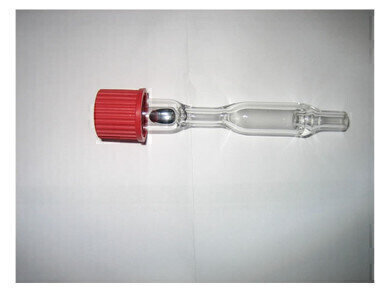Air Monitoring
A new mercury vapour calibration system for laboratory use
Nov 24 2014
Mercury vapour emissions resulting from human activities, or into workplace air, need measurements and regular calibration of those for quality control to underpin monitoring programmes for regulatory compliance.
Brown et al (Analyst, 2008, 133, 946; Analytical Chemistry, 2014, 86, 7819) have published SI traceable methods for calibration of mercury vapour measurements. These do not seem readily transferable for quality control in routine analytical laboratories nor for calibrating continuous emission monitoring nor field measurements. Trace mercury vapour standards prepared in compressed gas cylinders are not without problems, especially for field measurement calibration, if the gas cylinder temperature is not adequately controlled.
The system of refillable, uniquely identifiable diffusion tubes for dynamic generation of VOC and SVOC standard atmospheres for calibrating field and laboratory measurements (Thompson and Perry, Journal of Environmental Monitoring, 2009, 11, 1543-4), produced by Tracer Measurement Systems Ltd. and distributed by Eco Scientific Ltd., has now been applied to generating mercury vapour calibration standards.
The photograph above shows a Tracer Cert® diffusion tube type AA (with the precision bore tube part 2cm long 4mm bore) containing an aliquot of mercury. It was used in an Eco Scientific ES4100 oven, set at 100ºC, and periodically weighed (to 0.1mg) using a digital balance over ten days. Linear regression analysis of diffusion tube weight loss, as function of time from starting of the experiment, gives the rate of emission of mercury vapour as 6.7ng/min. If this rate of mercury vapour emission was mixed into a metered gas flow of 1l/min, the concentration obtained would be 6.7 ng/l. Mercury vapour pressure at 100ºC is about 30-40Pa. If it was used at 50ºC for field calibration, at that temperature, the vapour pressure is about 2Pa, so we would expect much lower emission rates.
Methods of using Tracer Cert® diffusion tubes can be seen on YouTube. For technical literature and more details about purchasing these tubes and Eco Scientific thermostatic ovens (ES4050 & ES4100) click here and for technical advice click here.
The table shows concentrations (ng/l ≡ µg/m3) expected at 100ºC, with various Tracer Cert® diffusion tubes at different carrier gas flow rates.
| Tube Type | 250ml/min | 500ml/min | 1l/min | 5l/min |
| AA | 26.8 | 13.4 | 6.7 | 3.35 |
| AC | 6.7 | 3.4 | 1.7 | 0.84 |
| AE | 1.7 | 0.84 | 0.43 | 0.21 |
| AG | 0.067 | 0.034 | 0.017 | 0.0084 |
A-coded tubes have 2cm long precision bore parts, AA having a bore of 4mm, AC 2mm, AE 1mm and AG 0.2mm bore. Bore sizes range from 4mm to 0.1mm, with lengths of 2cm (A codes), 4cm (B codes), 6cm (C codes), 8cm (D codes) and 10cm (E codes). E-coded tubes have emission rates 5 times lower than A-coded tubes.
Digital Edition
IET 34.2 March 2024
April 2024
Gas Detection - Biogas batch fermentation system for laboratory use with automatic gas analysis in real time Water/Wastewater - Upcycling sensors for sustainable nature management - Prist...
View all digital editions
Events
Apr 22 2024 Hannover, Germany
Apr 22 2024 Marrakech, Morroco
Apr 23 2024 Kuala Lumpur, Malaysia
Apr 23 2024 Kintex, South Korea
Apr 23 2024 Edmonton, AB, Canada


















